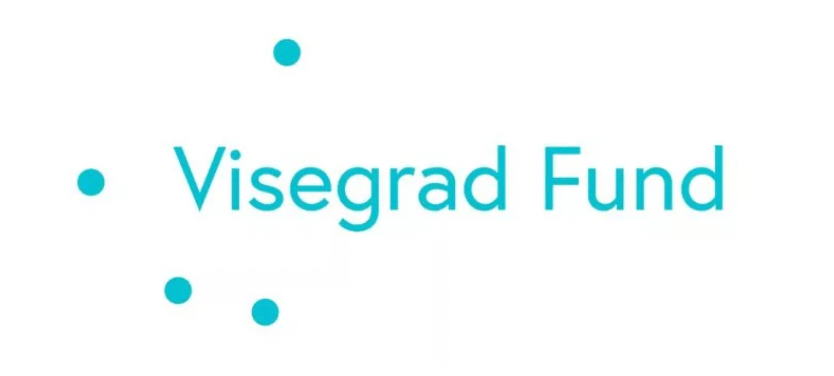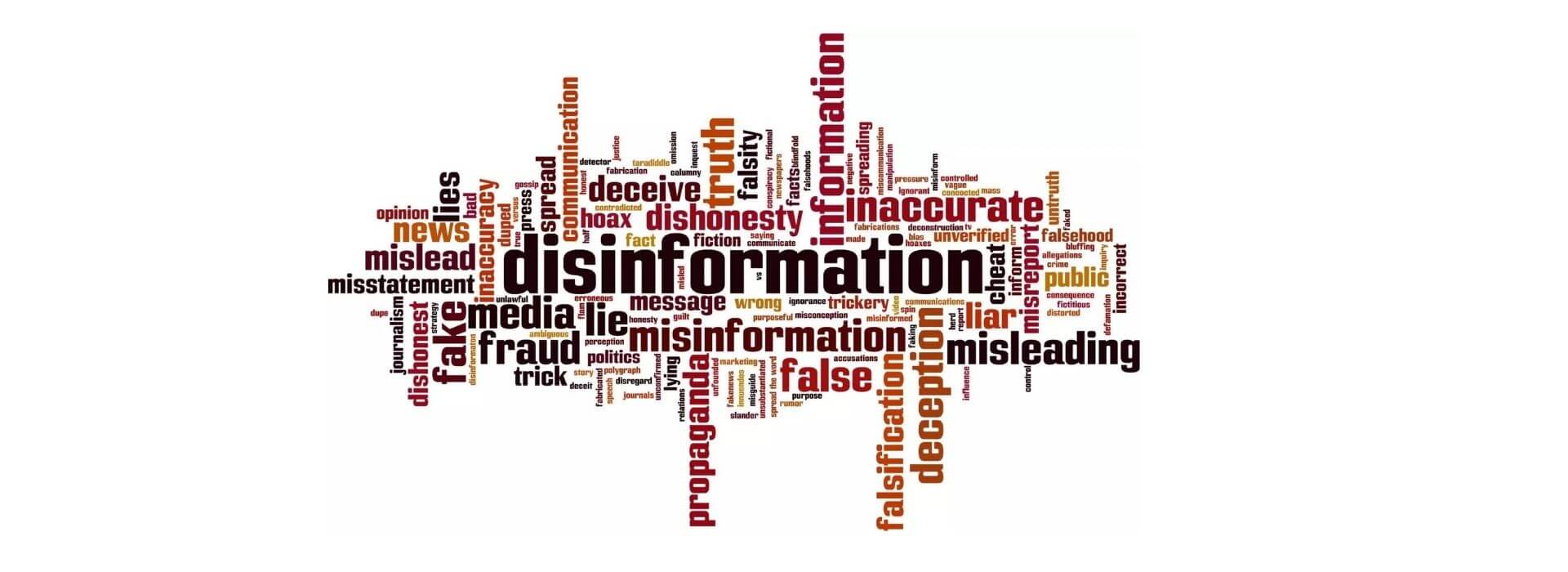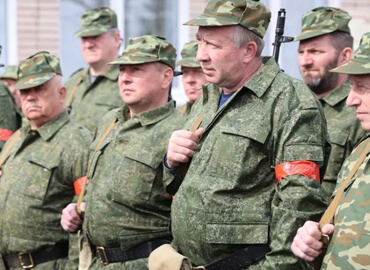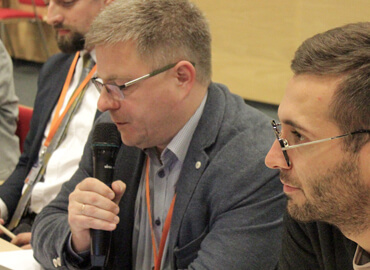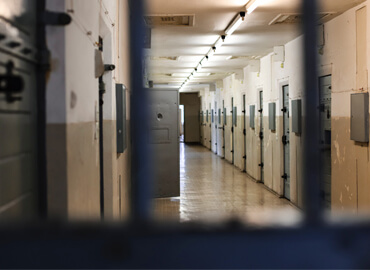The subject of European mediaspheres vulnerability is particularly important today as the first few weeks of warfare in Ukraine highlighted. This article will outline how the Polish online space was riddled with certain themes and how easily those sowing disinformation were able to adapt to the real socio-political events in order to influence, fabricate and even control them.
Virtual Reality Creates Real-Life Polish Battlegrounds
Immediately after the attack on Ukraine, it became apparent that there is a possibility to create real events through virtual – and completely made up – «realities». During those days, posts about the enormous increase in fuel prices and supply shortages at petrol stations suddenly started appearing. The reason given for this was Poland’s supposed preparation to engage in warfare, which would result in an inability to evacuate the populations from Polish cities if the conflict was to expand. The aim was to create panic and deepen the chaos in Polish society, communities already disoriented by the outbreak of the war.
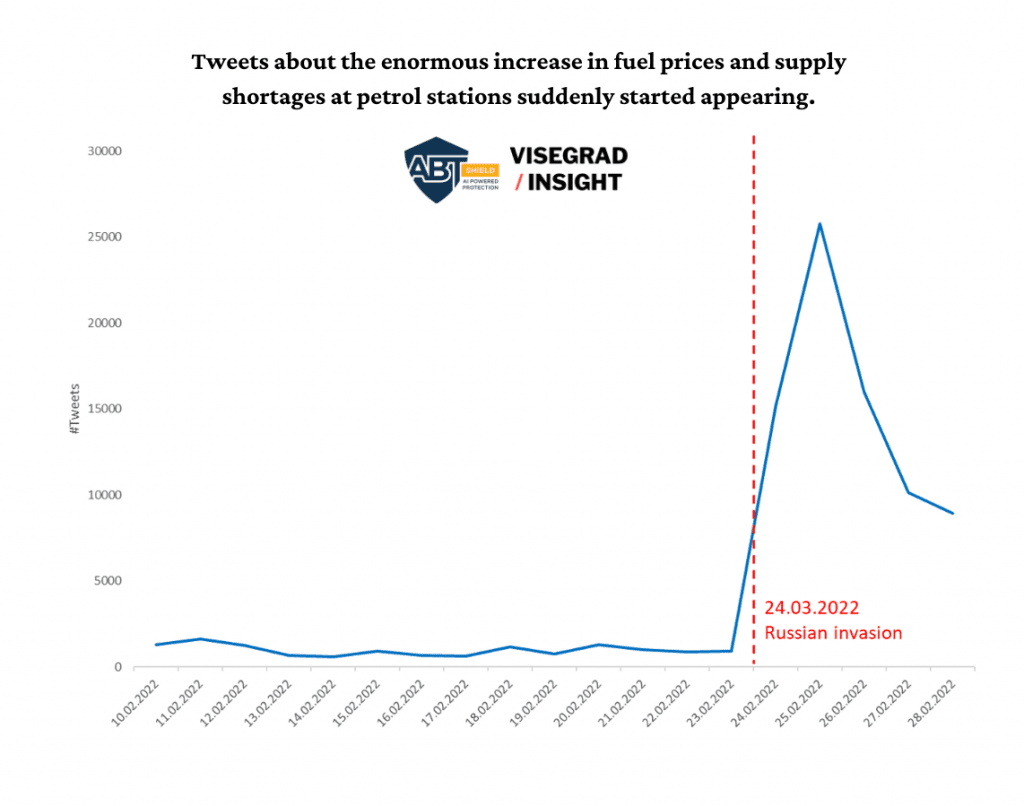 Source: abtshield.com [https://abtshield.com/]
Source: abtshield.com [https://abtshield.com/]
As a result of these disinformation activities, queues of people wanting to fill up at petrol stations led to temporary shortages in fuel availability hence we were dealing with a self-fulfilling prophecy. After a few days, the situation at the petrol stations returned to normal though the fuel price increases were to appear in the following weeks.
«COVID-19 Does Not Exist, and Neither Should Ukraine»
Let’s start from the beginning, meaning here the week prior to the invasion as the massive disinformation campaign connected with Russia’s war in Ukraine has lasted longer than the actual invasion.
A few days prior to the military attack which took place on 24 February 2022, many Polish Facebook and Twitter accounts, which for the last year had mainly focused on the pandemic, started a permanent and methodically conducted anti-Ukrainian witch-hunt. During the days leading up to the invasion, there was a visible above-average activity of entries being posted, heating up the historical Polish-Ukrainian animosities. The aim of these actions was to «refresh» Polish stereotypes about Ukraine and to strengthen negative emotions towards the refugees.
The most frequently repeated phrases were: «Bandera supporters» and «UPA» [Ukrainian Insurgent Army] which operated as synonyms for «murders» and «perpetrators of genocide». «Ukrainians», on the other hand, were presented as ‘drunkards preying on Poland’ who contribute to the worsening of the economic situation of Poles, ruin the labour market and increase unemployment in the country.
 Source: abtshield.com [https://abtshield.com/]
Source: abtshield.com [https://abtshield.com/]
The dominant message at that time was the following: Ukrainians do not really deserve a country of their own; they do not have their own history or statehood. Ukraine itself (for its own good and that of Europe) should be divided among its neighbours including Poland. One of the most frequent pictures presented on social media was those showing the partition of Ukraine by neighbouring states.
Disinformation Clusters Like a Hydra
Interestingly, both the themes about the fuel shortages as well as the hate against Ukraine and Ukrainians were started, to a large extent, by a few well-organised clusters of accounts on Facebook and Twitter platforms. The Institute of Research on the Internet and Social Media estimated that the reach of the messages generated by those groups oscillated around 2 million users. These groups run the accounts with a clear pro-Russian orientation and support the Russian aggression against Ukraine. They often portrayed Putin as the only leader who understands the current situation in Europe and can bring about a «just rule» as opposed to the «moral decay of the West».
 Source: abtshield.com [https://abtshield.com/]
Source: abtshield.com [https://abtshield.com/]
Despite numerous blockades by social media platforms of accounts disseminating fake news, these disinformation clusters continue to be reborn, forming new structures to conduct their activity. It should be noted that the first ‘disinformation landing’ strictly connected with inciting hate towards Ukrainians did not reach a mass audience and in a natural way was covered up by the real stories of Poles helping Ukrainians as well as Polish support for Ukraine which developed spontaneously, unexpectedly and on an unprecedented scale.
In the following weeks, the disseminators of fake news largely focused on toning down positive messages and emotions which decidedly dominated the negative ones. The disinformers adapted their methods and instruments to the conditions which loomed on the «battlefield» for the internet souls at that given moment, taking into account the prevalence of those who sincerely sympathised with the Ukrainians and provided help. This does not, however, mean that they have given up on promoting content which hits directly against Ukrainians or shows («the justified») hostility of Poles against the refugees.
Hate, In Advance
Besides mainstream news and messages, narratives were created on the web which tried to portray Ukrainians in a bad light in various situations in order to carry out a direct attack on them. It seems that much of the content presented below was invented in anticipation of similar events taking place in real life. In such a situation, the authors of these posts could always refer back to them in an effort to showcase their own infallibility and build their authority. The overriding aim of these actions was to weaken the aid organised by Poles throughout the country in support of the Ukrainians. The following includes narratives and messages awaiting to be «realised»:
- Presentation of Ukrainians as a nation which will never say thank you for the aid received from the Poles. On the contrary, they will demand even more.
- To disseminate information that the Poles will lose their child benefits because now it will be the Ukrainians that will receive them. The same pertains to free health service which is being offered to the Ukrainians but is often inaccessible to Poles.
- To show that many of the refugees are persons wealthier than most of the Poles helping them.
- Dissemination of information suggesting that together with the refugees from Ukraine, terrorists from the Middle East and bandits who attack Polish women and children are entering Poland.
- Suggesting that together with the increase in the number of refugees, morbidity rates for COVID-19 and other diseases, not recorded in Poland for many years, are also on the rise.
- Blaming the Ukrainians for the drop in the value of the Polish currency and the increase in fuel and food prices as well as the lack of cash at ATMs.
- To build the conviction that it is the Jews and their representatives in Ukraine (e.g., President Zelenskyy) that are responsible for the conflict in Ukraine.
It is worthwhile to note that with such a big wave of refugees which hit Poland since the beginning of the war (approx. 3 million) as well as the unpredictability of the conflict in Ukraine, one can be sure that many of these themes and narratives will become reality in the near future. It will be of little importance that these incidences will be single and rare. One such case is enough to give credibility to the author of «hate» and to the theories they have proclaimed. These, on the other hand, will be generalised to refer to all Ukrainians.
«Only Russia Can Guarantee Peace»
During the first weeks of the war, the number of posts questioning the unity of NATO dynamically increased as well as those degrading and making fun of the most important European leaders. They were often shown as inept, weak and scared and juxtaposed against Putin, who was portrayed as a strong leader.
The anti-European and anti-American narrative returned like a boomerang. The helplessness of the Western world against the actions of Russia was «shown». Numerous comments appeared advising Poles against an alliance with the US, and at the same time, undermining any real possibility that NATO’s Article 5 would ever be used. A war between Poland and Russia would be the inevitable consequence of the alliance with the US, a war Poland was sure to lose.
According to these messages, the US looks out only for its own interests, treating Poland like a training ground and Poles as mere cannon fodder. In reference to the European allies, this situation would lead to a repeat of 1939 when France and the United Kingdom, bound with Poland by a military alliance, «did not want to die for Gdansk». These messages claimed it was only through an alliance with Russia (as was the case during the times of the Soviet Union) that Poland would be able to operate for many years without war.
In this context, Hungary was often pointed out as a good example to follow: «The Hungarians do not engage officially nor on such a mass scale in aid for Ukraine, thus they will not suffer the consequences from Russia». What’s interesting is that almost 90 per cent of the analysed accounts referring to the above narratives also took part in the distribution of content sceptical towards vaccinations or totally negating the COVID-19 pandemic. A decisive majority of the accounts sympathised with the right-wing Konfederacja (Confederacy) party or with the actions of a group operating under the name ‘Comrades’ which favours a pan-Slavic movement characterised by a positive attitude towards Russia’s actions and calling for the «normalisation of relations with Belarus».
The aim of these messages emitted at that stage of the conflict in Ukraine – as was previously the case with content on vaccinations and COVID-19 – was to evoke a feeling of distrust towards the government administration or international organisations.
«US and Ukraine Are the Aggressors»
After President Biden’s speech in Warsaw (26 March 2022), we observed the beginning of a propaganda action which portrayed the US as the aggressor that for years conducted wars in many countries destroying the governments in power and attacking civilian populations. An equal sign was placed between US and Russian military actions during the past decades – from the wars in Korea and Vietnam to the intervention in Afghanistan, Iraq, Serbia, Kosovo and Libya, until today’s invasion of Ukraine.
What counts in the current conflict, is only the interest of superpowers like the US, China and Russia. Visits to Poland, like those of Vice President Harris and President Biden, were described as «contributing nothing» to the improvement of the security of Poland and Ukraine. The aim was to convince the public opinion that Poland and Ukraine have become tools in a political game conducted by the Biden administration in order to destroy Russia. The conflict in Ukraine is in itself an act of US aggression on Russia carried out with Ukrainian hands. This narrative has been supported by the theory that the US has laboratories in Ukraine producing biological weapons therefore Russia has the right not only to defend itself (by invading Ukraine) but also to do it with unconventional methods.
In numerous messages, the US was also accused of using Poland as it wanted to start a war between Russia and the entire NATO bloc. This would have happened if at the beginning of March, Poland had agreed to hand over MIG planes to Ukraine. As a result of US actions, it was Poland that would have suffered the greatest losses from the war with Ukraine. «Poland will be left on its own with high inflation, a lack of EU funding and refugees who will continue to demand support from Poles».
Also, there was a return to the heating-up of anti-Ukrainian sentiment but with a difference — at that stage, it aimed to dehumanise Ukrainian troops. This was done by showing the supposed crimes, rapes, tortures and degradation of prisoners, which were being perpetrated by the Ukrainian army. It should be remembered that this happened a few weeks before the discovery of Russian crimes in Bucha near Kyiv. On almost every occasion, examples from Polish and Ukrainian history were used to support this narrative, especially the carnage in Wolyn during the 1940s, depicting Ukrainians as merciless and cruel criminals, not that different from the Islamic terrorists or Russian soldiers carrying out the same crimes.
The unchanged goal remains the feeling of an almost atavistic sense of danger felt among Poles towards Ukrainian citizens. It is almost certain that this sowing of hate will bring about unrest and escalation of social tensions in Poland despite the mass sympathies and empathy from Poles towards Ukrainians. What is unknown is only the scale of this phenomenon.
Similar actions, systematic and perfectly planned on the Polish internet are carried out in reference to different countries and their leaders as well as whole sectors of the economy. We will like to share these with you in the coming articles focused on the digital battleground.
This article is published as part of the Prospect Foundation project «New Propaganda and Disinformation Challenges for Visegrad/EaP states in the Changing Environment» managed by iSANS and supported through grants from the International Visegrad Fund.
